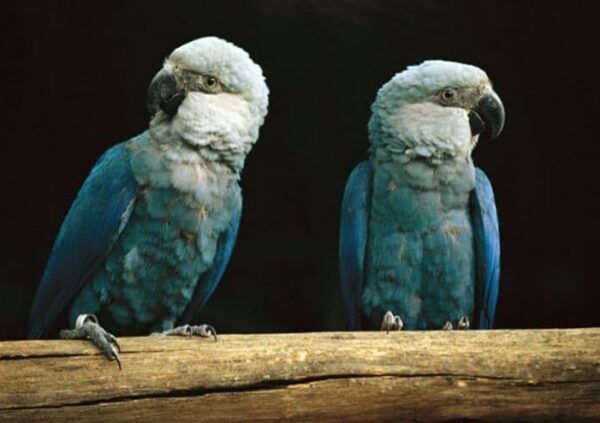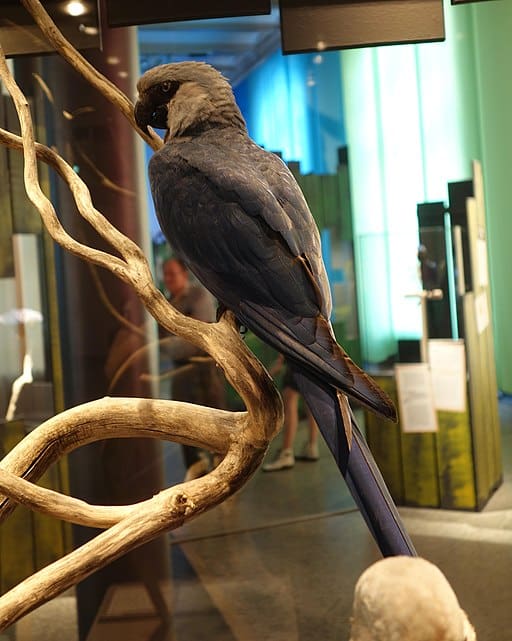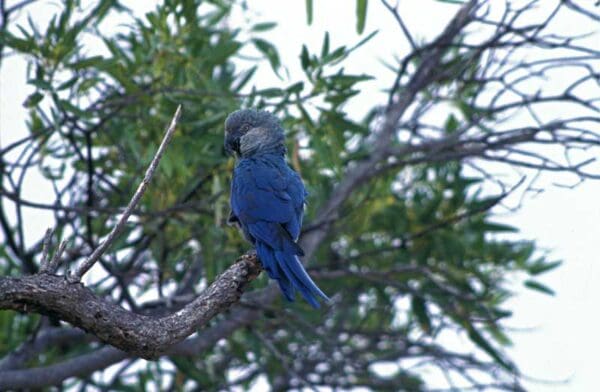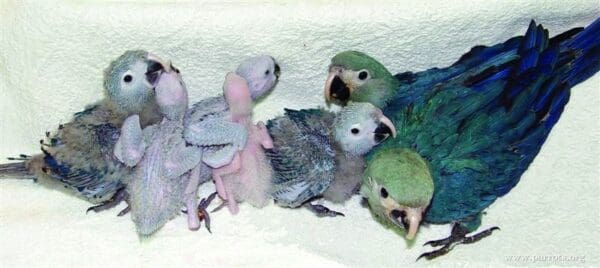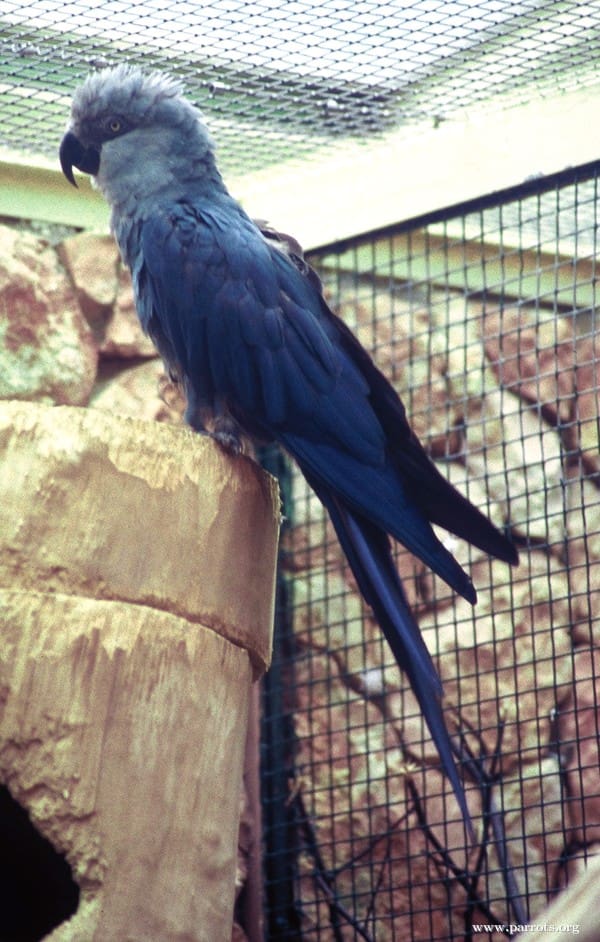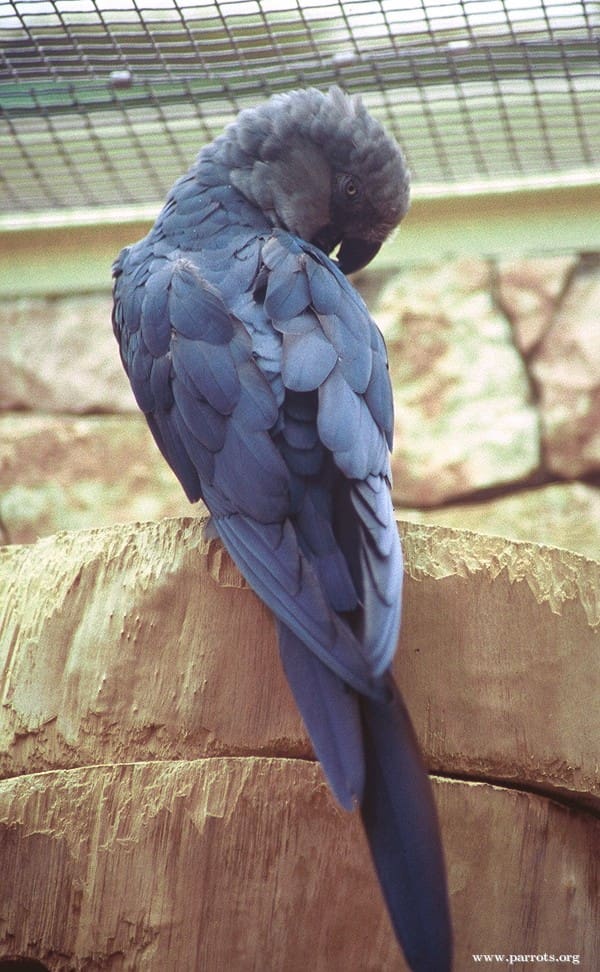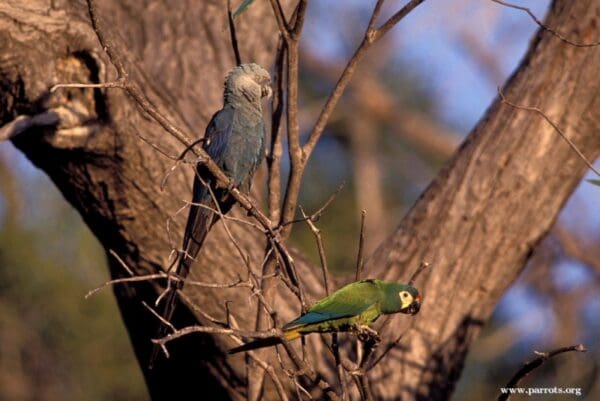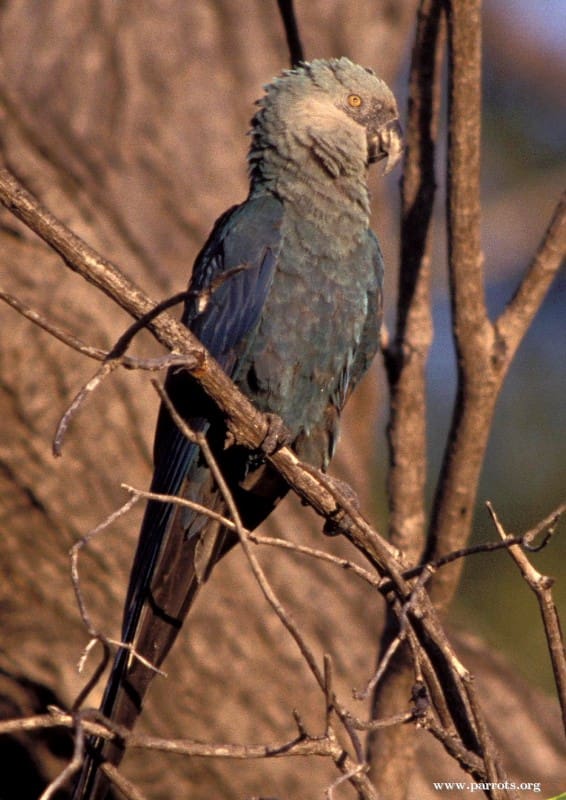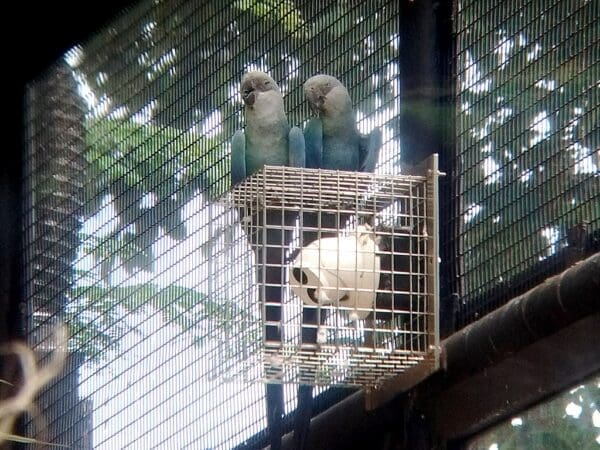Spix’s Macaw
Also known as:
Little Blue Macaw
Also known as:
Little Blue Macaw
![© Etna 1984 [CC BY-SA 4.0] from Wikimedia Commons Spix's Macaws perch on a log](https://parrots.org/wp-content/uploads/2023/01/wpt_Spixs-Macaw_1132-11-e1732818867631-100x100.jpg)
![© Etemenanki3 [CC BY-SA 4.0] via Wikimedia Commons](https://parrots.org/wp-content/uploads/2023/01/wpt_Spixs-Macaw_1132-10-100x100.jpg)
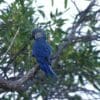
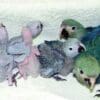
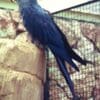
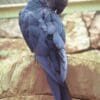
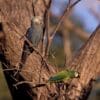
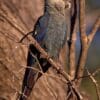
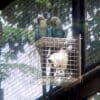
DID YOU KNOW?
The the last known wild Spix’s Macaw disappeared in 2000.

Cyanopsitta

spixii
Size:
56 cm (21.8 in)
Weight:
360 g (12.6 oz)
Subspecies including nominate:
one
Colour Adult:
Both adults soft blue macaws with darker blue back and wings; greyish head. Eye ring grey, eye yellow. Beak black.
Colour Juvenile:
As in adults but with white eye ring. Eye dark brown. Beak with black and horn colouration.
Call:
Resonant, quieter and more wavering than Hyacinth Macaw. Also some screeching notes.
More Information:
WPT-supported project – Spix’s Macaw: Finding the Last Wild Bird
Content Sources:
CITES
Avibase
BirdLife International
Cornell Lab of Ornithology/Birds of the World
A Guide to Parrots of the World, Juniper and Parr, 1998
Vanished and Vanishing Parrots, Forshaw, 2017.
Parrots: Status Survey and Conservation Plan 2000-2004, Snyder, McGowan, Gilardi and Grajal, 2000.
Parrots of the World, Forshaw and Cooper, 1989.
Parrots of the World, Forshaw, 2006.
Parrots in Aviculture, Low, 1992.
Captive Status:
World population uncertain, all in captivity with approximately 20 released to the wild.
Longevity:
30-40 yrs.
Housing:
Walk-in enclosure, minimum length 7 m (23 ft).
Diet:
Soaked or sprouted sunflower; walnuts, pecans, Brazil nuts, pine nuts; fresh corn, fruit and vegetables. If in tropical regions, palm fruits. Complete kibble for macaws.
Enrichment:
Are voracious chewers that need a variety of bird-safe, unsprayed branches and limbs. Require a lot of plantings in the aviary.
Nest Box Size:
80 x 30 x 30 cm box or stump.
Clutch Size:
2 to 3
Fledging Age:
8 weeks
Hatch Weight:
—
Peak Weight:
—
Weaning Weight:
—
World Population:
Extinct in the wild with a number released in 2022; unknown numbers in captivity.
IUCN Red List Status:
Extinct in the Wild
CITES Listing:
Appendix I
Threat Summary:
A BirdLife ‘restricted-range’ species. Affected by trapping for wild bird trade and almost total loss of caraiba woodland, its nesting habitat.
Range:
Formerly Rio Sao Franscisco Valley, northern Bahia, Brazil.
Habitat:
Required gallery woodland with Tabebuia caraiba trees along seasonal creeks in the caatinga for nesting.
Wild Diet:
Seeds of Cnidoscolus phyllacanthus and Jatropha pohlianna, seeds and fruit of Melanoxylon, fruit of Maytenus rigida and Ziziphus joazeiro and possibly nuts.
Ecology and Behaviour:
Formerly used well-used flight paths to and from food sources; until 1980s were strongly gregarious. Were seen to be strongly loyal to roosting and breeding trees.
Clutch and Egg Size:
2 to 3 eggs, 35.0 x 29.0 mm (1.4 x 1.1 in).
Breeding Season:
November-March. Nest is in cavity (wild and captive birds).
Related Links:
—
